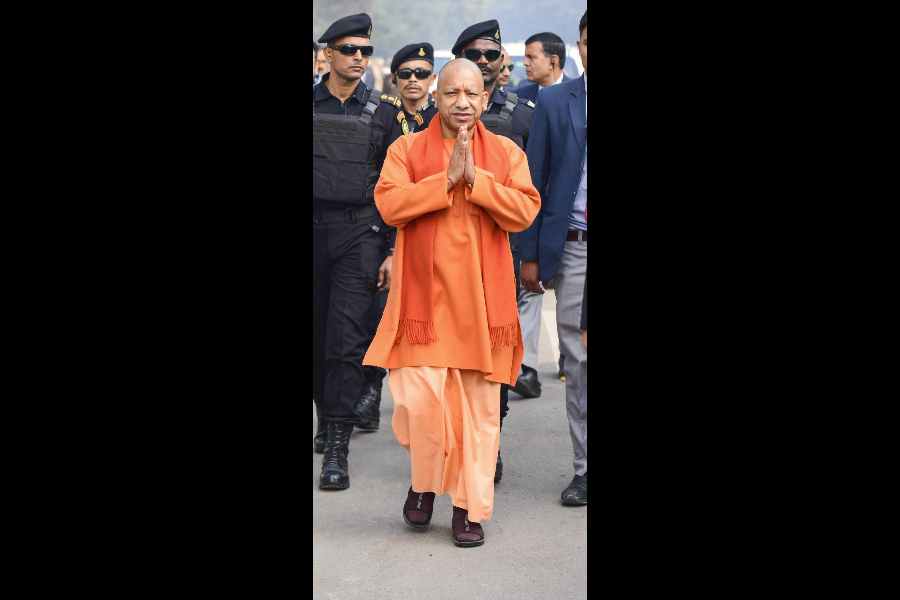BJP leader and Finance Minister Nirmala Sitharaman on Monday wondered whether the Congress is aware of the cost of implementing the social welfare schemes, including giving Rs 1 lakh to women belonging to below poverty line families.
A lot has been said in recent times about the fiscal management (especially on debt) of our government under PM Modi's leadership, Sitharaman said in a post on X.
"Many times, absolute numbers have been compared without considering the GDP growth on which we base the debt calculation. I would like to put out a clear picture, unlike @INCIndia, which hides behind lofty promises that are non-transparent and disconnected from reality," it said.
"Has @INCIndia considered the cost of the lofty promises made in their manifesto? Have they calculated how much the 'Khata Khat' schemes will cost fiscally? Will they borrow substantially for them, or will they raise taxes to fund them?" it said.
She wondered how many welfare schemes would Rahul Gandhi shut down to accommodate the fiscal cost of the 'khata khat' schemes.
Last month, Congress leader Rahul Gandhi while addressing a poll rally made a poll promise saying that the party will transfer Rs 1 lakh in the account of one woman from every poor household in the country if they win the elections.
"Would @RahulGandhi care to answer these real questions and explain how their gigantic schemes of fiscal splurge would work without increasing taxes or borrowing heavily and running down the economy? Here's a challenge to him to answer these questions for the people of India," she said.
The truth is that the BJP government's fiscal management is much better than that of the UPA, despite facing Covid-19 pandemic in which substantial resources were used for relief efforts, the FM said.
During the UPA rule from FY04 to FY14, she said, central government debt, including external debt at current values, grew about 3.2 times, from Rs 18.74 lakh crore in March 2004 to Rs 58.59 lakh crore in March 2014.
This increase was much greater than the 2.9 times growth from Rs 58.59 lakh crore in FY14 to Rs 172.37 lakh crore in FY24 (RE), she said, adding, this lower increase between FY 2014 and FY 2024 occurred despite the impact of the Covid-19 pandemic, where the Centre borrowed to provide relief to those in need even as revenues fell.
The central government's debt, which was 52.2 per cent of the GDP at the end of 2013-14, was reduced to around 48.9 per cent in 2018-19 through gradual fiscal consolidation.
During this period, the fiscal deficit was lowered from 4.5 per cent in FY14 to 3.4 per cent in FY19.
However, due to the Covid-19 pandemic and proactive government measures to protect lives and livelihoods, the fiscal deficit surged to 9.2 per cent of the GDP in 2020-21, increasing the central government's debt to 61.4 per cent of the GDP.
Post-pandemic, Modi-led government pursued a balanced approach to fiscal consolidation while sustaining economic growth. This strategy reduced the fiscal deficit from 9.2 per cent of GDP in 2020-21 to 5.8 per cent in the Revised Estimates for FY24.
The Interim Budget projects a further reduction to 5.1 per cent of GDP in FY25. Similarly, the central government's debt-to-GDP ratio fell from 61.4 per cent in 2020-21 to 57.1 per cent in 2023-24.
The Net Market Borrowings (G-sec) of the Centre had gone up a whopping 4.5 times during the UPA regime, she said, adding, "it went up 2.6 times under our government despite the Covid-19 pandemic".
"It shows the robust fiscal management of our government," she added.
Under the Congress-led UPA government, she said, the underlying deficit was much higher than the budgeted deficit.
Observing that the UPA government did "window dressing" to hide its high fiscal deficit without maintaining the integrity of the fiscal numbers, she said, fiscal deficit for 2008-09 would have been 7.9 per cent instead of 6.1 per cent as officially stated.
The UPA government issued special bonds in lieu of cash subsidies to the Oil Marketing Companies (oil bonds), fertiliser companies, and FCI to keep the official deficit numbers lower, she said.
"Over Rs 1.9 lakh crore was kept off the books in the five years from FY06 to FY10. Including these off-budget borrowings would have severely increased the fiscal and revenue deficit numbers," she said.
She further said UPA excelled in policy misadventures and scams like CWG, Antrix-Devas, Coal and Telecom spectrum allocation scams caused huge losses to the exchequer.
There was unsustainable demand stimulus post-2008, unproductive government borrowings, ill-targeted subsidies and government schemes were further marred with corruption and leakages, she said.
Moreover, she said, "due to the rigorous implementation of DBT, we have saved Rs 3.5 lakh crore from leakages and corruption".
Highlighting a cross-country comparison, she said it reveals that India has fared relatively well and maintains a general government-debt ratio below that of FY03.
"India had a debt-to-GDP ratio of 81 per cent in 2022. This is significantly lower than economies like Japan (260.1 per cent), Italy (140.5 per cent), the US (121.3 per cent), France (111.8 per cent), and the UK (101.9 per cent) in the same period. On the other hand, several countries have faced the risk of sovereign default in recent years," she said.
The number of countries facing high debt levels increased from 22 in 2011 to almost 60 in 2022.
Regarding central government debt, she said, it is also important to note that it is overwhelmingly rupee-denominated, with external borrowings (from bilateral and multilateral sources) contributing a minimal amount (less than 5 per cent of total debt), which signifies that exposure to volatility in exchange rates tend to be on the lower end.
Except for the headline, this story has not been edited by The Telegraph Online staff and has been published from a syndicated feed.











